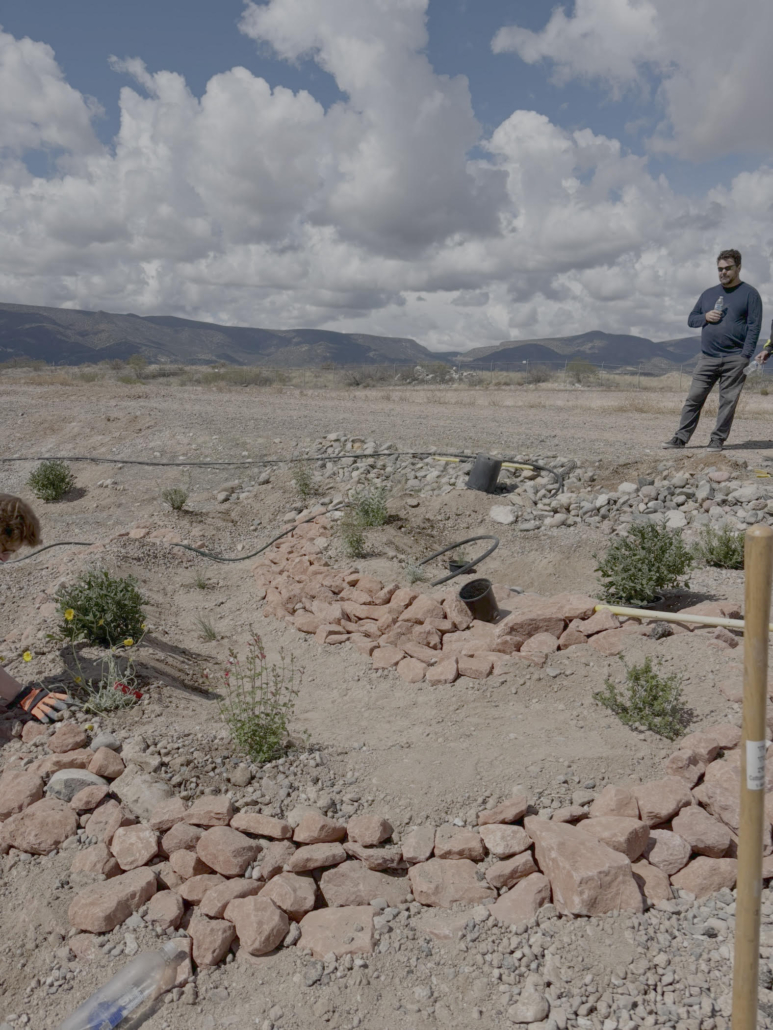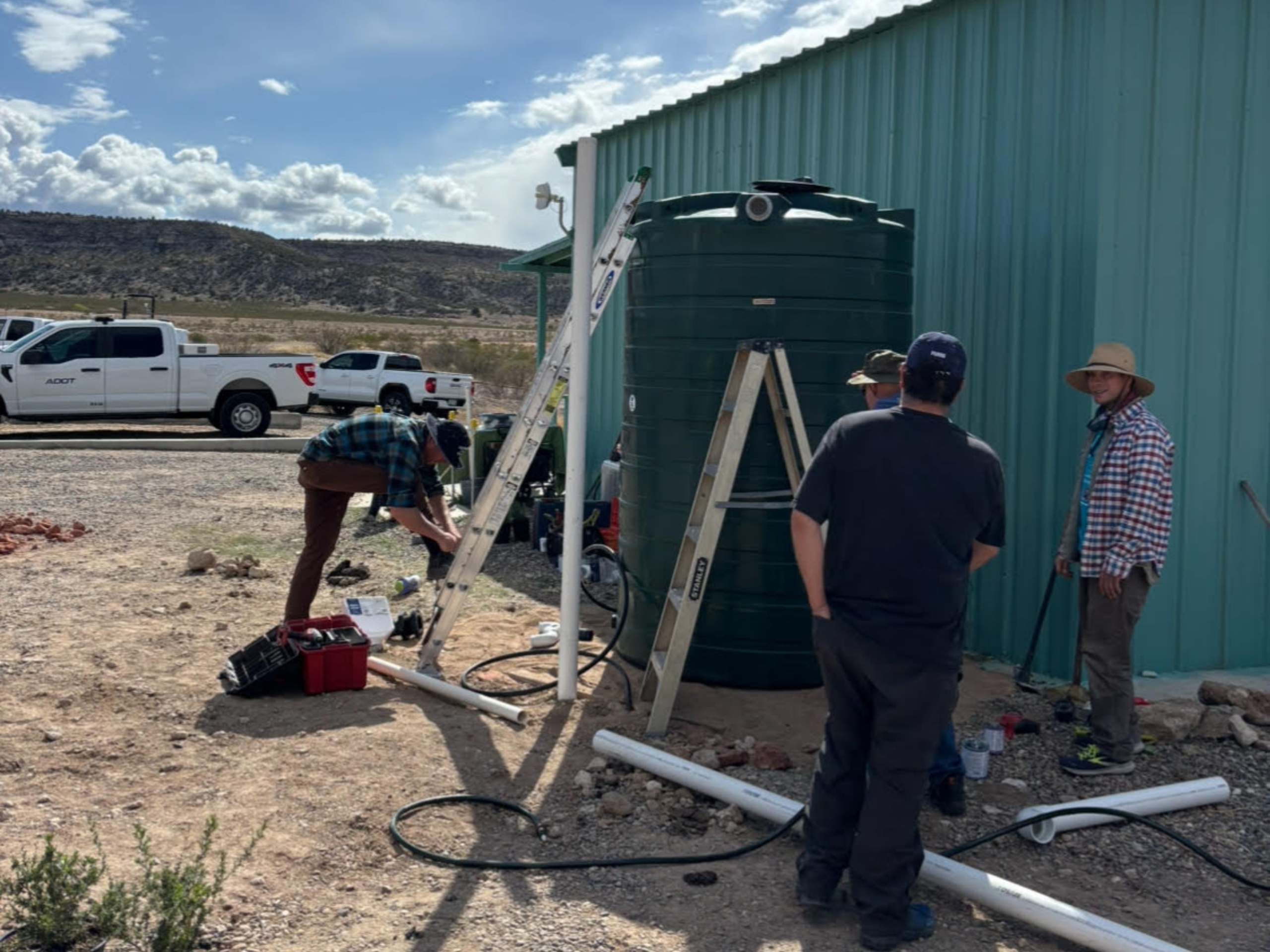Learn
This past Thursday morning, April 3rd, I had the opportunity to volunteer with the Watershed Management Group from Tucson and other involved citizens and employees of the Camp Verde area to learn about and engage with rainwater harvesting. Together, we installed a 1,300 gallon rainwater tank at the Camp Verde stormwater office. While installing the rain tank itself was a unique learning experience, I spent the most hands-on time building berms, red rock walls, and planting native plants as an overflow preventative measure. Accounting for overflow through passive rainwater harvesting is an essential part of installing any rainwater tank. In the event of a larger-than-expected rain event, the excess rain should have a beneficial place to go where the spread is slowed down and infiltrated into the soil. If this step is missed, then stormwater problems caused by overflow rain can easily be created. For this reason a pipe was connected to the tank and installed underground where it was let out at the top of the two berms we created. Moving water to a high point is the first step to slow down its spread. From there the spread will be slowed down further by infiltrating into the soil, watering the native plants, moving down the rock walls, and into the small trench we dug with strategically placed river rocks at the end. This was a highly informative experience, and I not only was able to further my rainwater harvesting skills, but also my knowledge of the Verde River Valley and its local ecology. Thanks to the Watershed Management Group, Camp Verde Stormwater, and my fellow highly motivated volunteers for a great day!








